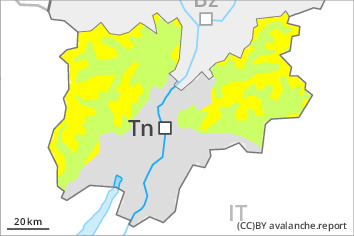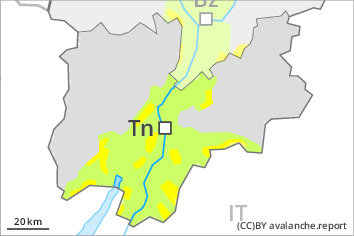
Danger level
 | treeline |
|  |
|  | ||||
|  |
|  |

Wind slabs and weakly bonded old snow represent the main danger.
As a consequence of the strong northerly wind, snow drift accumulations will form. The fresh and somewhat older wind slabs must be evaluated with care and prudence. They can be released even by a single winter sport participant above the tree line. Slopes adjacent to ridgelines are especially unfavourable.
Additionally avalanches can also be released in deep layers. Such avalanche prone locations are to be found on steep, little used shady slopes above approximately 2200 m and on steep sunny slopes above approximately 2500 m.
Mostly avalanches are medium-sized.
Snowpack
dp.6: cold, loose snow and wind
dp.1: deep persistent weak layer
The wind will transport the loosely bonded old snow. Faceted weak layers exist in the old snowpack, especially on shady slopes above approximately 2200 m, as well as on sunny slopes above approximately 2500 m.
Tendency
Fresh wind slabs require caution.


